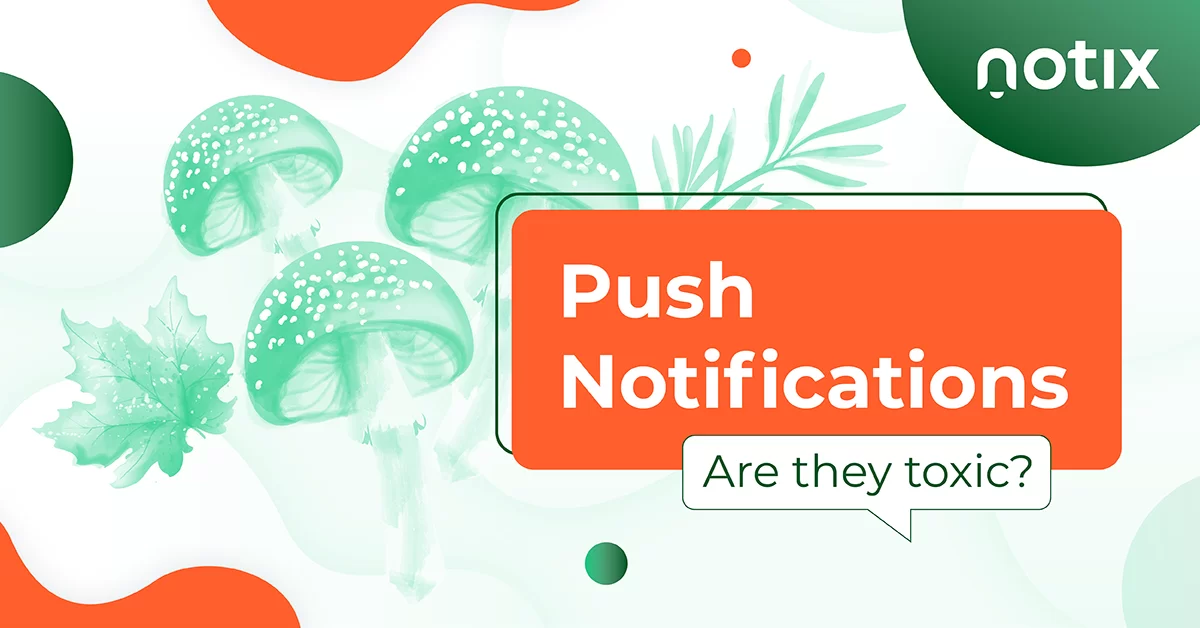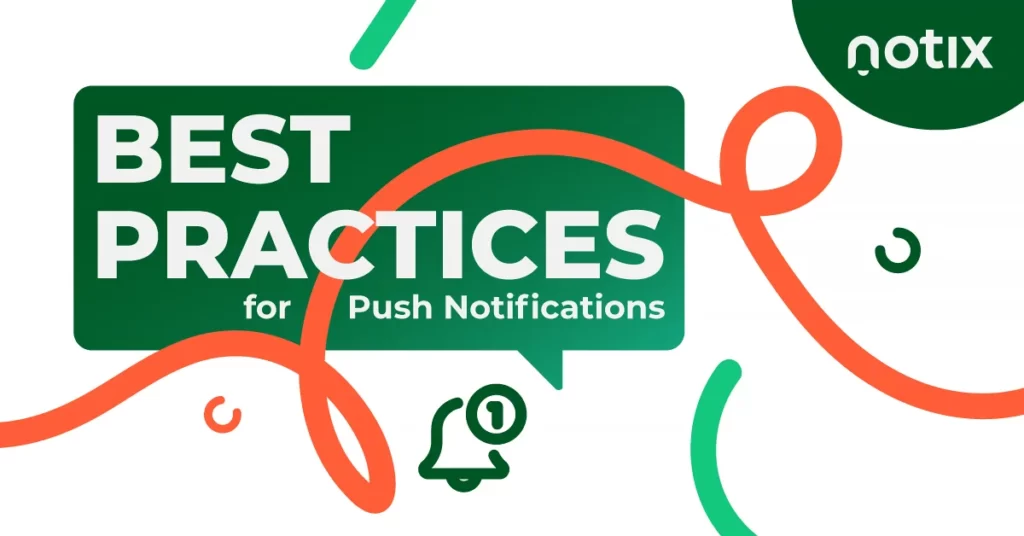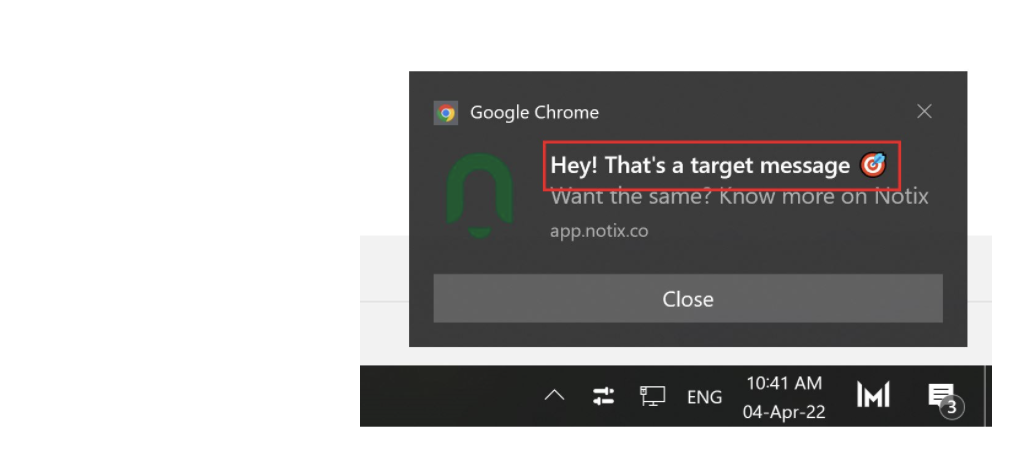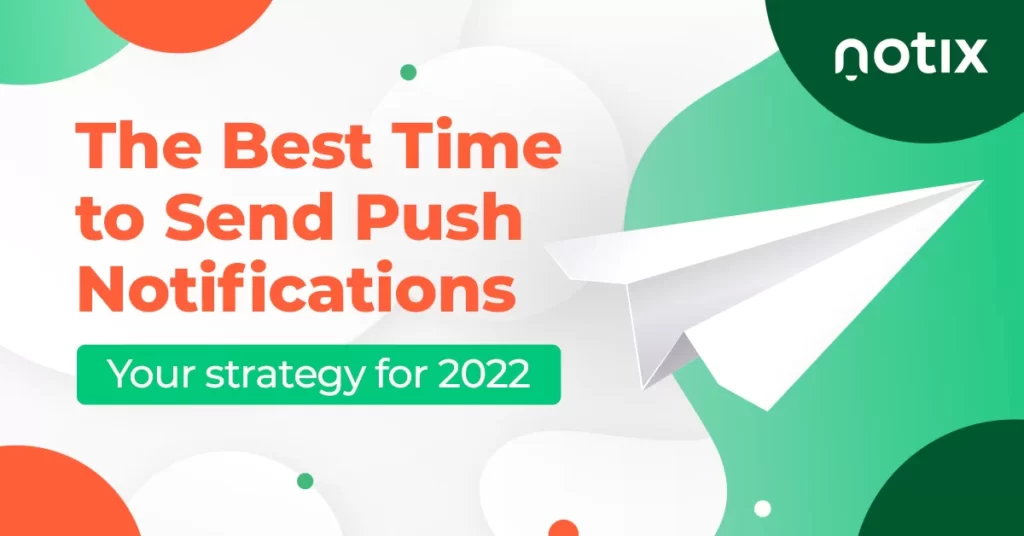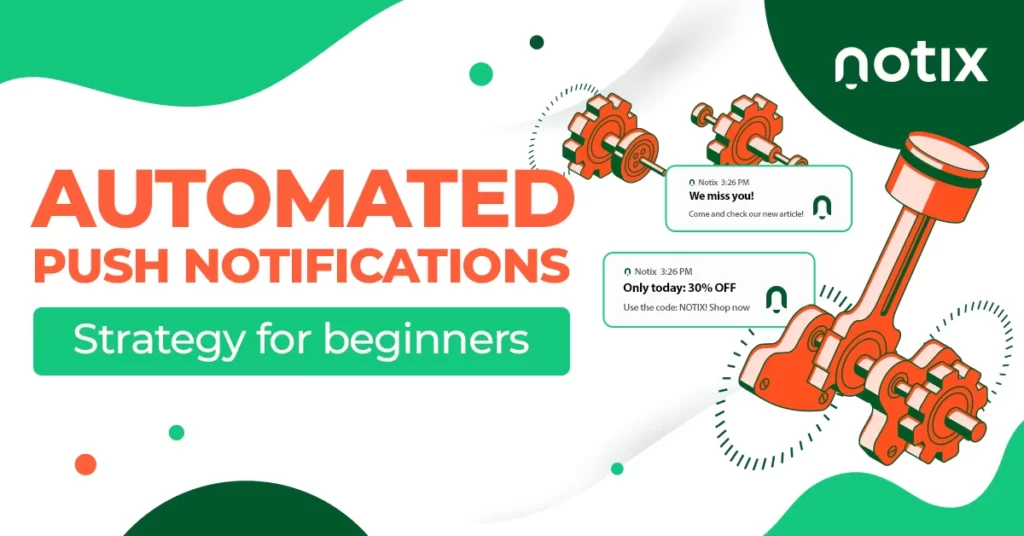No, push notifications are not toxic, harmful, or spamming messages. When used correctly. However, they can become very much so. Especially if you don’t know your way around these means of mass communication.
Following, we will enlist the most annoying ways in which Push Notifications can, and will become your worst nightmare. Plus advice on how not to make these errors.
So, what are these little nuggets of gold, if not toxic, and most importantly, why is the bad ‘karma’ surrounding them?
The History and Importance of Push Notifications
Let’s see just how push notifications came to be and what makes them so precious and incontestably valuable when used correctly.
As we have seen in previous articles, Push Notifications are one of the most effective engagement and re-engagement methods. And what makes them so irresistible is their urgent alert look that reminds of system updates.

Also, the fact that once you engage with them makes them go forever, helps. So people really do tend to pay attention to push notifications, and interact with whatever piece of information they get this way. Talking about a win-win!
Still, despite the heat that they’ve been getting over the past few years, Push Notifications have been around for a lot longer than some of you might realize.
In fact, as we already saw in the history of Push Notifications, these little bundles of joy were at the very base of the pulsating Blackberry LED. And even long before that, the Push technology was the same that enabled emails to leave your post (and it still is).
While not the first time in the field, the push notifications were also made known by Apple’s APN (Apple Push Notifications) – a moment falsely recorded in history as the official Push Notification Launch.
The very beginning of this technology, however, dates back to 1981, with the Simple Mail Transport Protocol (SMTP).
Important Push Notifications Statistics
Based on an internally conducted study it appears that the opt-out rate for Push Notifications seems to be really spiking up when more than 21 push notifications/ week are sent. However, the rate itself is still pretty low – only 8%.
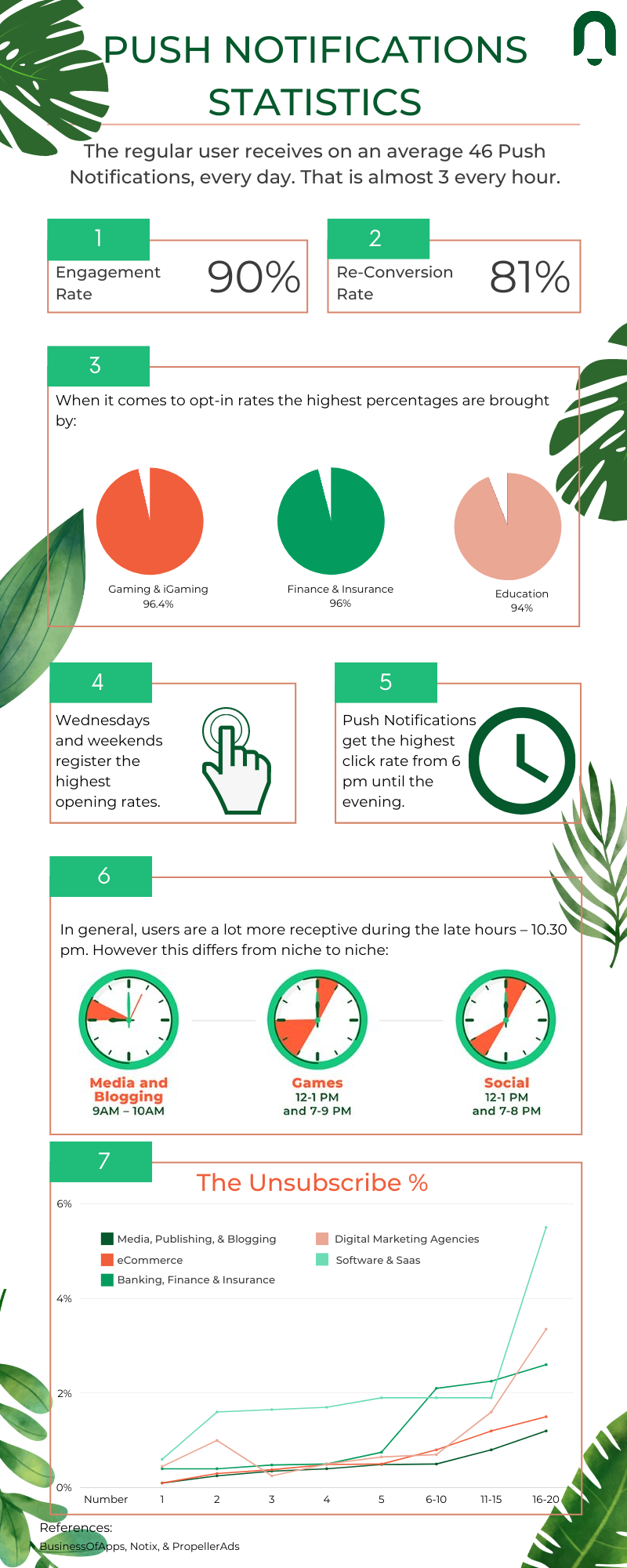
What makes Push Notifications Toxic?
So far, so good. But what do all these have to do with Push Notifications being Toxic?! Well, everything.
So far we’ve told you about the most optimal moments to send push, the amount, and the topic. But what if you take all that, and do the complete opposite.
Well, then that’s when Push Notifications start getting toxic. So let’s get into every wrong thing that you can possibly do, to turn this effective means into everything toxic.
1. Getting out the word, at all costs
The first thing you need to think about when you’re creating a new campaign is the goal, right. And you create it around the end-user, make sure that you manage to reach his curiosity, and provide some sort of knowledge or comfort.
For example, your goal might be to inform newcomers of your newly published content:

So, why is the example before bad? First of all, it doesn’t give any information about anything. You need to be more straightforward. Explain to the user what awaits once he clicks.
Or at least, give a hint of what he might find.
2. Thinking that time boundaries are for rookies
What’s up next, then? Scheduling. We have seen that the optimal time to send push notifications can differ from industry to industry.
So all it takes for you not to mess this up is to do some light research on the topic. See when your users are mostly active, and most in need of your notifications.
Or don’t, and see how long it will take for them to mark your alerts as annoying and run.
3. Disregarding time-zone changes
Remember that one time your office got completely turned upside down because the time changed, and not all your colleagues got the memo?
Well, that’s particularly annoying when you’re doing your beauty sleep, or minding your business, and someone decides that it’s about time you heard about their new ‘random-object’ offer.
Also, that’s not the only thing that can really turn your subscribers off. Consider that the difference from some countries can even be a whole day ahead. Just double-check your receiver’s time and make sure that GEOs don’t take you by surprise.
4. Content Specialists are overrated anyway, right?
They say that content is king, but it just doesn’t happen. You need to work on it. Make it catchy. Attractive! Steal your users’ attention in the most creative ways. You need to delight. Enlighten them. And make them fall head over heels for your website.
Here’s an example of a too wordy push notification, that’s trying (but gloriously failing) to use repetition in their ‘copy’:
Here’s our take on it:
We just kept it shorter, straight to the point, and also offered a nice Call to Action.
But there is more to content than meets the eye:
- Header – This is the first thing that your users will see. So it needs to be brilliant. Forget about stuffing and connecting words. When in doubt, make clever riddles, or stir curiosity. But there are only so many times this strategy might work.
So read the room, your subscribers list that is, and stick with whatever keeps your user’s boat floating. You need to make them want to read the body, then click on whatever you’re suggesting.
- Body – Make it punchy. When you have very little space in your hand, it’s extremely important to use it wisely. Make it stick and click with your users. And most importantly, make it entice them to engage with your message.

- Emojis – It kind of goes without saying but you should use emojis scarcely, and cleverly ?. ?Don’t use too many✋, and don’t ⛔make it your goal? to use emojis?.

- Images – Your images have to relate to the rest of your content. They serve as an eye-catcher and must add to your message. If you’re using unrelated images you will only get the opposite message across.

All of the above can improve, or damage your click rate. So make sure not to use them to turn your push notification campaigns into toxic landfills.
5. Giving Call To Actions too much importance
A very important factor that just couldn’t bear being put in the same place as content is your call to action. Now you might’ve seen that absolutely every push has a certain word, or phrase that invites the reader to take an action – sometimes the body can be formulated in such a way.
Here’s how not to do it:
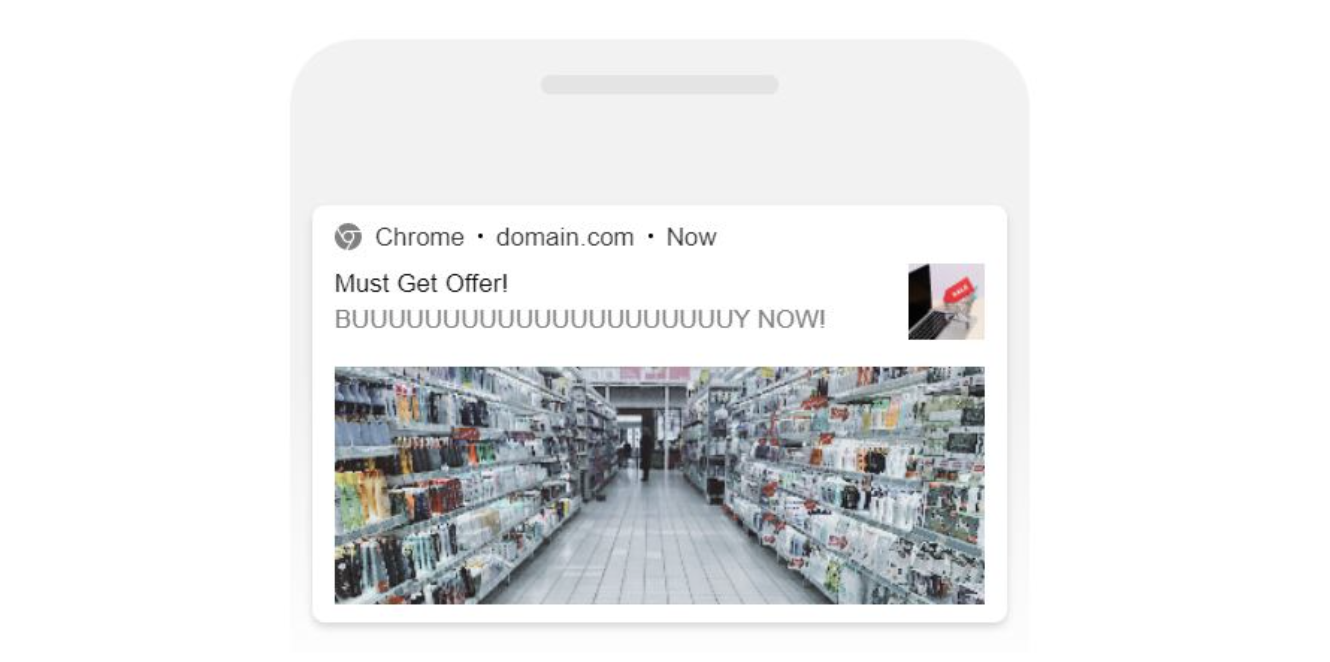
To start with, the Push from above offers absolutely no information whatsoever about what is the offer, in text or image. Also, the call to action ‘BUUUUUUUUUUUUUUUUUUUUUY NOW!’ would make any shopper say: ‘No thank you’, rather than engage.
We know the space is limited. But you should always aim to answer at least: What is the offer for. Try something like:
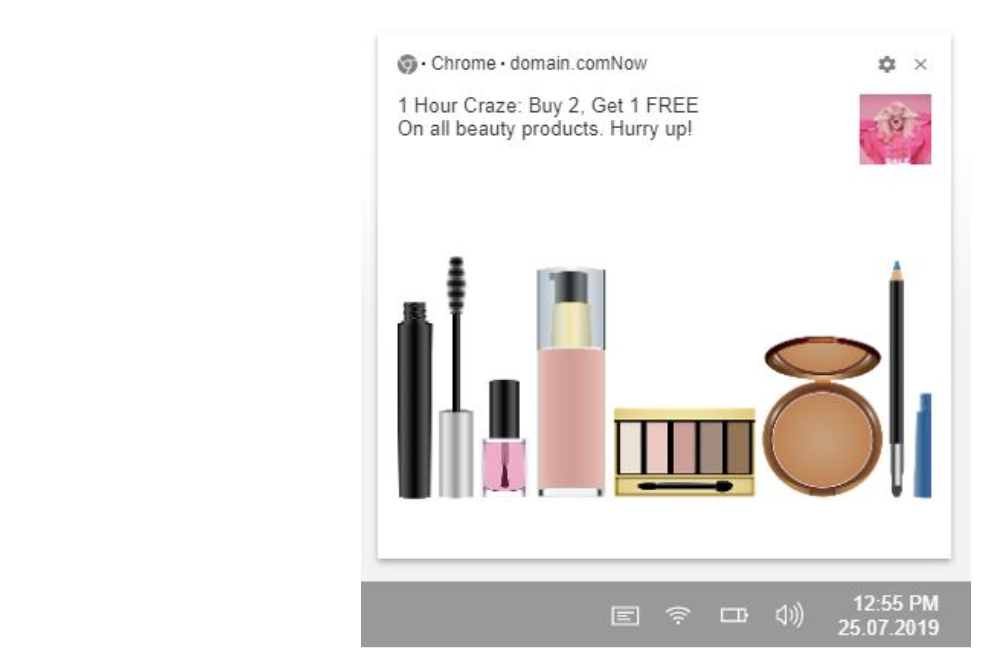
And always remember, whether it’s an actual button, or just a piece of text, your call to action has an extremely powerful role. It enables your readers to take the action that you’re going for. And you will have to be specific.
6. Going through the trouble of checking for bad or broken Target URLs
Not only are these frustrating, but they’re also a major waste of time. Both, yours and that of your push notification subscribers. Just picture them carefully reading through your alert, trying to give you clicks, only to end up… nowhere!
So of course that’s how you get yourself on the black list of bad push notification messages.
7. Forgetting about Events
Moving into a more advanced field of study for push notifications, are event-related push notifications. However, they’re not about the topic. They’re still worth mentioning as a separate category of content.
Types of event push notifications:
- Bank holidays, like Easter, Christmas, Thanksgiving
- Sports Events, for example, Super Bowl, UEFA Champions League, NBA
- eCommerce holidays, such as: Single’s day, Cyber Monday, Black Friday
And these push notifications are particularly important, especially when they’re missing. This type of push notifications can really make or break your connection with the users.
So is their timing. Keep in mind not to send a match update after the game is over. Or, god forbid, let your clients know that the previous day you had a once-in-a-lifetime discount.
Missing out on these occasions will only help boost your competitors, and make you a thief of time, and your push a waste of space.
8. Not being precise and relevant
Keep a long story short! Not that you’d have the choice with the character limitations of push notifications. But we understand that sometimes from the need to make a point, you might end up saying more that you need to.
Instead, think: what is the bare minimum I can say to captivate, delight, and entice this user to click? Now remove all the extra characters, and you’re all set.
Or have it your way, and see how nocive your push can become.
Another thing that can help with this, is to define clear and precise goals for your push. Check the most popular push notifications topics, and build your way around them.
Here are a few ideas to get you started:
- cart abandonment
- offers and promotions
- price drop alert
- inactive user reminder
- new content update
- new contest
- bundle offers
- weather-based offers, etc
9. Sending as many Push Notifications as you want
It’s not like your readers don’t have anything better to do, and they’re just dying for your alerts to disrupt their daily activities. And just so we’re clear: no, more is not better!
In fact, so much so that you’ll definitely get on the naughty list if you SPAM your users (yes, that’s right – it’s spamming, if unsolicited or unneeded). Only write when you have something important to say. Or when they’ll want to know about it.
10. Not running tests
If you know anything about keeping in touch with users, you should understand that it’s extremely important to check that what you’re doing is right, and that it’s delivering the expected results. Alternatively, you can end up spending time pointlessly.
Also, when you run tests, you get the chance to optimize your campaigns and make sure that you’re paying enough attention to the most important things. Maybe your users like getting more punch from your mix. Or maybe you’re using just too many emojis, or the wrong combo.
Then your push will once again be flagged as toxic and unnecessary.
11. Running tests the wrong way
We know, you’re probably thinking that this is the whole point of tests. To check two competing services at the same time. But what if you’re not removing the tag of the previous provider, and just sending push left and right, and even the same from two different providers.
Then chances are that you’re spamming your users. Sending them the same push notification at the same time, with no exact strategy or intention in mind.
So what is the solution here? Pretty simple. You just need to only keep one tag. And running parallel tests will not cause this issue for you, simply because parallel tests rely on a special kind of tag that you can use at the same time as your already existing provider.
12. There’s no such thing as too much automation
But there is such a thing as too bad automation. And in fact, push notification automation is supposed to help you, and take off from your load. But what if you forget where you started from, and you end up in a bad circle of optimization, and not verified choices?
You automate a process that is only wasting your money, and not bringing a dime in your budget.
So how do you avoid doing this, and ending up on the Toxic list of every push notification subscriber? You go back to step number 10, and make sure that all your tests are in order, and done on time.
This way, you can also avoid sounding too robotic, and lacking any human touch of emotions in your push notifications.
13. Optimizing by the ear
Just as bad as automating without an actual purpose in mind, is optimizing your campaign for the sake of optimization. Sure, you don’t have to be an expert to get it right from the start, but it’s also not something you can do randomly.
When optimizing your campaign, focus on statistics. Check what tags are the most performing. Try to figure out what you did right, and how you achieved it. Repeat your success every time, and make sure that your users don’t lose focus, nor touch with your website.
Then scale your results. Take it from the best to the worst, and make sure to always keep on growing.
As with everything in life, there’s no one size fits all. And you need to understand your audience, know what triggers them, and what keeps them hooked. Repeat your successful streaks and make sure to never get too annoying or repetitive.
Important Takeaways:
- Push Notifications and the technology behind them have been around for over 40 years
- These alerts are a very powerful engagement and re-conversion tool
- Push Notifications can do more harm than good when used incorrectly
- Testing, Optimization, and Automation are three essential steps for every publisher using push, but can also work against you when done badly
- You can’t duplicate someone else’s results, so you really need to understand your audience

 PT
PT ES
ES